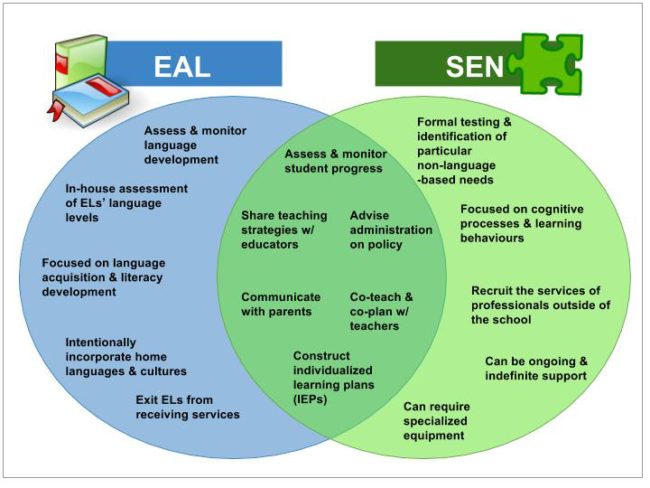This article on the partnership between English as an Additional Language (EAL) and Learning Support (LS) is the Part 2 of Jon Nordmeyer‘s guest post on collaboration.
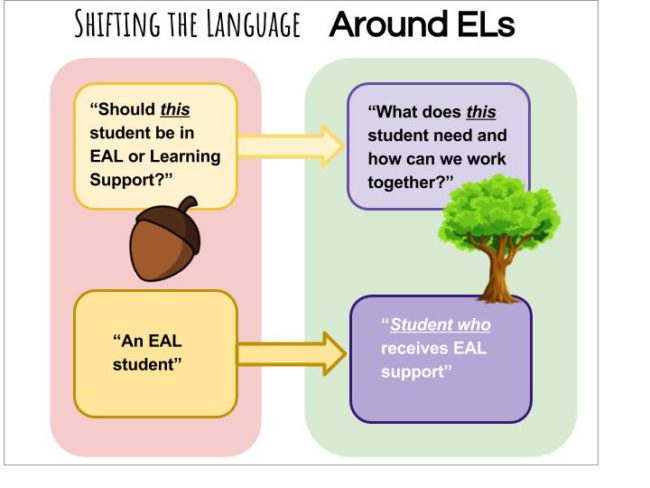
Shared vision is essential as adults collaborate to serve student learning; multiple perspectives provide a three-dimensional view of culturally and linguistically diverse students and the assets they bring to our schools. Therefore, another valuable opportunity for collaboration is between EAL and Learning Support (also known as Special Education or SEN) teachers.
As two separate but historically marginalized groups, many EAL and Learning Support teachers have found solidarity in their mutual isolation and shared support role. However, the complicated relationship between these two programs does not always lend itself to collaboration, especially in inclusive schools with increasingly diverse student populations. Collaboration requires a shift from the false dichotomy: “Should this student be in EAL or Learning Support?” to the question: “What does this student need and how can we work together?” Barriers often exist in the form of admissions/placement policies, earmarked resources, legacy fee structures or limited categories of service options.
Shifting from the 20th century paradigm of isolation to the 21st century paradigm of collaboration requires specialists to work with classroom teachers and with other specialists.
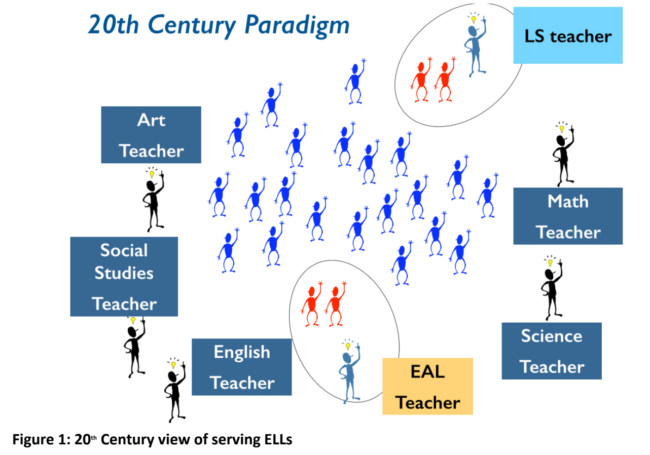
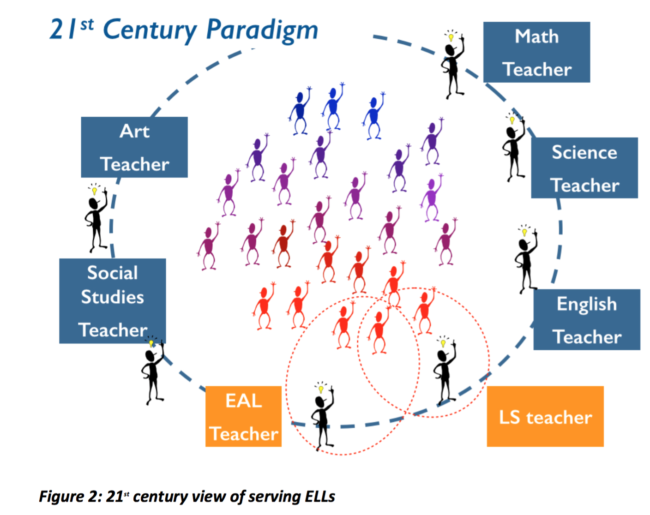
Building bridges across support departments serves students through more consistent and differentiated instruction as well as targeted interventions, where necessary. In the 21st century paradigm, EAL and Learning Support teachers are an equal and essential part of the team of teachers responsible for all students. Cultural and structural support can scaffold meaningful collaboration between EAL and Learning Support teachers. Moving towards people-first language which refers to a “student who receives EAL support” rather than “an EAL student” allows the possibility for program integration.
The shared perspective of teachers who understand learning differences and language acquisition is invaluable when inquiring into student strengths and needs. In some schools, EAL and Learning Support are part of a larger Student Support team or a single, unified department. Many schools with increasingly diverse student populations target dual-certified teachers who can support a variety of needs in the classroom.
In either case, regular meetings of support teachers can help to reduce barriers and build a common process for identification, documentation and communication of student needs and support programs. “Parties who see different aspects of a problem can constructively explore their differences and search for solutions that go beyond their own limited vision of what is possible” Gray (1989). Together, EAL and Learning Support teachers can promote effective scaffolding for diverse learners, and through the principle of universal design, improve differentiation for all students.
Collaboration across Divisions: Border Crossings
Collaboration between divisions or across campuses to support alignment builds consistent programs and also shared community practices and values. Small districts or international schools are unique in that they are comprised of contiguous programs across all three divisions, often on the same campus, and sometimes in the same building. A lack of collaboration can result in disjointed programs or inconsistent school cultures. Without coordination across schools K-12, students and their families may feel like they encounter an international border crossing when they transition from 5th to 6th grade or from middle school to high school; it is as if they need to translate signs, exchange currency or obtain a visa for admission to the next division.
While significant and developmentally appropriate differences exist between elementary, middle and high schools, professional collaboration across schools ensures continuity of services and is another opportunity to make private practices public. In addition to common philosophies and policies, professional learning events such as a collegial share series or inter-divisional projects such as peer tutoring help to create a unified learning community and allow teachers to learn from each other. Perhaps the more appropriate metaphor for educational border crossings is the European Union: unified systems and a common currency, even while each division retains its own unique culture and geography.
Student Learning and Teacher Learning
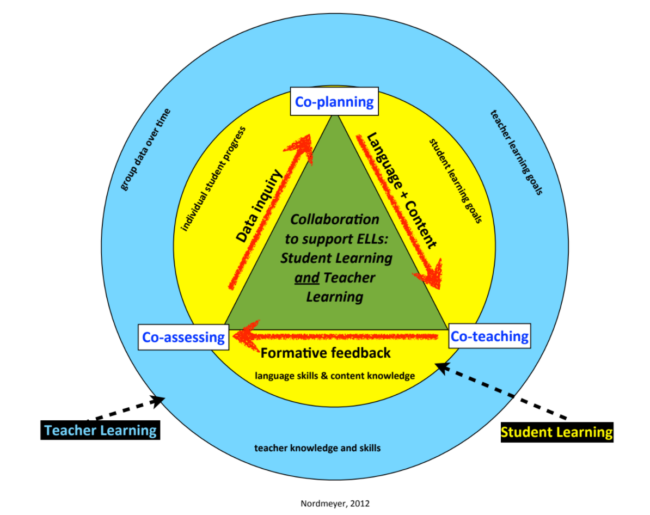
In the end, collaboration not only supports student learning but also offers a powerful source of embedded, reciprocal professional learning; as we plan, teach and assess together, we also learn from each other and hone our craft. Curriculum development in vertical teams or calibration of student work across grade levels helps us to see multiple perspectives.
Co-planning a lesson to identify learning targets for academic language alongside grade-level content helps both teachers to more effectively scaffold student learning. Within the context of collaborative relationships, external professional development also becomes more catalytic than episodic: simply attending a workshop is not likely to change a teacher’s practice, but integrating ideas from a workshop in conjunction with coaching or sustained dialogue with a colleague over the course of a semester can have a much more lasting impact (Joyce and Showers, 1982).
When we view collaboration as professional learning, the processes of co-planning, co-teaching, co-assessing and co-reflecting serve educators as well as students. However, this process requires intention and commitment. Teacher learning should mirror student learning:
- we can set professional goals alongside student learning goals
- we can provide each other with feedback as a formative assessment tool
- we can use data inquiry to help us evaluate the effectiveness of our collaboration and establish new professional learning targets.
Collaboration that only benefits students but does not foster professional growth is a lost opportunity. As the K-12 learnscape continues to change in international schools, collaboration holds the promise of transforming professional relationships, with profound implications for everyone’s learning.
Gray, B. (1989). Collaborating: Finding Common Ground for Multiparty Problems. Jossey-Bass.
Joyce, B. & Showers, B. (1982). “The Coaching of Teaching” Educational Leadership, October, 1982.
Jon Nordmeyer has been an international educator and consultant for 25 years. He has taught in Quito, The Hague, Taipei, Istanbul, Shanghai and Bangkok and has presented at international conferences in Africa, Asia, Europe and South America. He has written for International Schools Journal and Journal of Staff Development, and co-edited the Integrating Language and Content (TESOL 2010). He is the International Programs Director at WIDA and serves on the editorial review board of Globally Informed, a peer-reviewed journal for international educators. Jon earned a BA in Classical Archaeology from Dartmouth College and MA in TESOL from School for International Training. He is pursuing his PhD in Educational Leadership and Policy Analysis at the University of Wisconsin-Madison.
This article was originally published in the EARCOS Tri-Annual Journal, Winter 2015.

